Join the discussion below
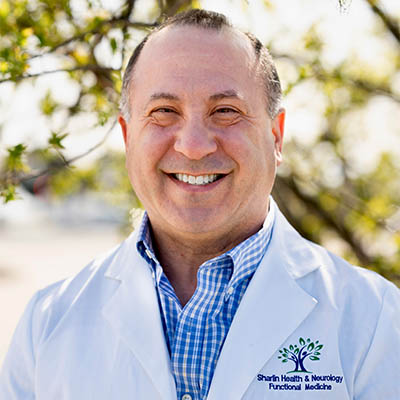
Kenneth Sharlin, MD, MPH, IFMCP
Kenneth Sharlin, MD, MPH, IFMCP, is a board-certified neurologist, consultant, functional medicine practitioner, Assistant Clinical Professor, researcher, author, and speaker. His medical degrees are from Emory University, The University of Virginia, and Vanderbilt University. His functional medicine certification is through The Institute for Functional Medicine. He is author of the... Read More
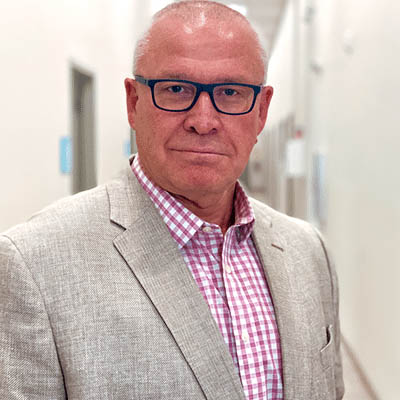
Innovative researcher and clinical practitioner in the field of regenerative-orthobiological medicine applications, with extensive teaching and educational program development experience. He started his career in regenerative technologies in 1989 in the Netherlands. Created the first in-hospital autologous biological department to serve patients in cardiac, orthopedic, reconstructive surgical, and vascular-wound care... Read More
- Embark on a journey into the world of regenerative medicine
- Explore the reasons why scientists dub mesenchymal stem cells as the “mother of all stem cells”
- Learn about the promising future of stem cells in Parkinson’s treatment
- This video is part of The Parkinson’s Solutions Summit
Related Topics
Biological Therapies, Chronic Inflammation, Healing, Healing Factors, Mesenchymal Stem Cells, Natural Healing Cells, Neurodegenerative Diseases, Neuroinflammation, Neurological Diseases, Plasticity, Platelet-rich Plasma Therapies, Precision Personal Medicine, Regenerative Medicine, Repair Mechanisms, Reparative Processes, Stem Cells, Tissue TherapiesKenneth Sharlin, MD
Hello. I’m Dr. Ken Sharlin. I am very excited to welcome my speaker for today, Dr. Peter Everts. You are listening to or viewing the Parkinson’s Solutions Summit, where we are interviewing many innovators in the field of Parkinson’s medicine and regenerative medicine, which is the theme for today. My interviewees are top-notch researchers. They are clinicians at the premier research institutions in the country. They are working within the holistic medicine space to bring you lifestyle medicine strategies to change the trajectory of Parkinson’s disease as we know it. We are bringing you the latest information on treatments that you can go to your doctor for today. With that brief introduction, I am truly excited to welcome Dr. Peter Everts. Dr. Everts is the chief scientific officer for EmCyte Corporation in Fort Myers, Florida. He is also the program director for the Gulf Coast Biologics Institute, also in Fort Myers. A fellow of the Royal Society of Medicine in London, UK, and more recently appointed professor at the Max Planck University in Sao Paolo, Brazil, he is truly an innovative researcher and a leader in the field of regenerative orthobiological medicine, with extensive teaching and educational program development experience. I might add, on a personal note, that Dr. Everts has been a mentor to me and truly taught me what I need to be doing when I approach this subject as a neurologist. Thank you so much, Dr. Everts, for joining us.
Peter A. Everts, PhD, FRSM
It’s a great pleasure Dr. Sharlin I came to be with you here on this very important subject. So I’m truly excited to be part of your team and look forward to our conversation. Thank you.
Kenneth Sharlin, MD
Dr. Everts, could we start just by hearing a little bit about your journey, how you came to be interested in this subject, and the kind of work that you do today?
Peter A. Everts, PhD, FRSM
How much time do we have? Well, I just started my journey in regenerative medicine, as we call it, in 1989. In those days, I was a clinical perfusionist, taking care of the function of the lungs of patients whose hearts were operated on. Very quickly and were connected to anything that had to do with blood and blood products. Taking that as a starting point, I learned to appreciate in the early nineties how powerful our tissues can be in healing disorders. For example, in patients who were severely compromised because of their disease, we were able to do a lot of reparative processes in these patients using their blood, using their bone marrow, and just to make very safe products that can be brought directly into the area where the repair needs to be done in a completely biological way. We started a journey, and after 89 days, we moved on and did a lot of publications going wrong in 2007 at the University of Utrecht in the Netherlands, and I continue to work, getting more specific in the use of what we call platelet-rich plasma therapies. Most of you would note it well, maybe more easily than bone marrow stem cells, or find the right stem cells. From there on, I was asked to take a job in the United States, which I happily took where I could to fulfill my dream. that is, be at the forefront of developing and finding ways to cure, well, maybe sometimes the impossible, and by using a patient’s tissues and fluids to induce tissue repair. I was very excited when Dr. Charlon approached me a couple of years ago to have a very brief discussion, and I remember, like yesterday, when we met at their office in Florida and we had a very light starting point for a discussion, and it ended up generating a lot of interest. While hearing Dr. Charlon’s thoughts on how potentially a lot of neurological diseases could be treated using patients’ fluids and tissues. Here we are now discussing what we will potentially have in mind and why it is that we believe that the therapies that we will set forward to develop are safe therapies for patients, and maybe create all the different lines of WOW therapeutic applications soon.
Kenneth Sharlin, MD
Dr. Everts, I wanted to start with something kind of basic for folks. We could lay the foundation. To be clear, if I can distill out a point or two that you’ve made, what we are talking about today are biological therapies, and tissue therapies, not drugs, which are regulated under a completely different guideline by the FDA.
Peter A. Everts, PhD, FRSM
That’s a very important point. As I said, biological products of your own would mean what we call the ontology of therapies. Ontology therapies would mean there is no water involved in a drug made by a pharmaceutical company. There is no intervening activity between your patient and yourself. We work completely within one of the guidelines of the United States FDA, and they need to be very strict in the guidelines they set forward, where physicians need to be very compliant with what they can and, most of the time, what they cannot do. We feel very comfortable working with the patient’s tissues to make a concentrated version of that and have more of what I would like to call a precision personal medicine approach where there’s no other intervention done than connecting with your body’s tissues. Inside the treatment room, there’s a device where you can see where the product is being produced before it’s given back to your body, with the intent to start healing mechanisms in place. It’s a very strict protocol. As a patient, you can see exactly what’s happening. You will be informed at all times. We learned well over the years. It’s not something; this is a new therapy. No, we have been around these therapies since the early 1980s, and it became clear that more physicians and more patients should have access to these kinds of therapies based on the powerful potential of your healing factors, whether these are well-known stem cells originating from your bone marrow tissue or your peripheral blood if it were another tissue. We learned that over the years. I was pretty excited when the well-known neurological field started to open up with our well-known physicians. We started to develop a biological mindset. In other words, the recognition of specific products, like particular stem cells from bone marrow, and how they can potentially be used. Now we need to stick with the guidelines, so that’s what we are doing. We just use the powers of your natural healing cells to be very much directed to the area where these cells are going to work.
Kenneth Sharlin, MD
When we use the term stem cell, there’s kind of a lot of mysticism associated with that word or those two stem cell words. It’s been my experience that the broad belief, and we use that term, is that we’re talking about cells that enter a specific tissue space, whether that’s the brain area, the cranium, whether that’s the heart, or maybe a joint, and I know you do a lot of work in the orthobiologic area, that somehow these cells differentiate and become the cells that are missing, gone, or have died. In Parkinson’s disease, one of the cardinal features is the loss of dopamine-producing cells in the striatum of the brain. The hope in Parkinson’s is that somehow we can introduce cells into that area and regenerate that part of the brain. Now, back in the 1980s, when I was at Emory University, Dr. Ray Watts, who went on to become president of the University of Alabama Medical System, was using embryonic stem cells that were stereotactically surgically introduced specifically into the area of the brain affected in Parkinson’s. To my knowledge, and correct me if I’m wrong, there’s not a lot of embryonic stem cell research going on anymore in the United States, but a lot of the interest has turned to what are called induced pluripotent stem cells, where cells can be reprogrammed through their DNA to become the cells that we want them to become. But when we’re talking about mesenchymal stem cells, we’re talking about something a little bit different. You’ve touched on this when you used the word natural or the phrase natural healing process. Could you help clarify that a little bit more?
Peter A. Everts, PhD, FRSM
Let’s try to keep this on the stand. Well, you’re right. The word umbilical stem cells says it all. It’s not from you as a patient; it’s from a donor. It’s an umbilical cord that came from a mom giving birth to a child. The umbilical cord undergoes a lot of processes. It’s out of your control. It’s out of your sight. The thing that struck me was when these kinds of products, like water, the jelly stem cells, and biblical cord stem cells we know, entered the market very briefly before the FDA put a halt to these products. You need to get an umbilical cord. You need to find a way to get these stem cells out of there. Then they need to go to a lab, and they need to be sterilized. In other words, you’re going to sterilize stem cells and then have them in a vial ready for injection. Everybody can understand that when we sterilize things, it’s with the idea of killing potential bacteria or contaminants. We’re going to kill these stem cells. For those reasons, they have been poorly studied. I don’t think, based on the guidelines, there is an interest in where the interest is: in your tissue, in your bone marrow. There are stem cells in there—different kinds of stem cells. They have different functions and, like you mentioned, took on the challenge. Initially, we thought, and we still think, that these stem cell skin cells renew. These stem cells are capable of a self-renewal process. They’re able to make more of these stem cells. From there on, they will have the potential to develop different kinds of tissues where they have been brought into contact. In other words, if a mesenchymal stem cell, the mother of all cells, as a lot of people would like to call them, is brought into an environment that is outside of the bone metro area, these cells have what we call plasticity. They’re able to take on that tissue, construct these tissue definitions, and do in that area’s reparative processes. That’s how we got started. If I may, just for one more minute, Dr. Sharlin. What we learned over the last couple of years is even more important in neurodegenerative diseases, and that is that these MSC mesenchymal stem cells, the mother of all cells, are capable of controlling an environment that is in flames. These cells have been found, but only three or four years ago. How they can alter the environment that’s in a chronic inflammatory state. That’s going to be very important for a lot of diseases, whether it’s neurodegenerative diseases, neuroinflammation, or chronic inflammation. These cells can confirm a tissue that’s chronically inflamed to a normal understanding of normal dynamics or normal activity, so to speak. That’s going to be even more important than what we think right now. then we’ll just do the repair mechanisms in diseased brain tissue.
Kenneth Sharlin, MD
We are participating in or facilitating the healing process. We have an anti-inflammatory role, and then there is a complicated word or concept that we recognize in these neurodegenerative disorders, whether it’s Parkinson’s, Alzheimer’s, or ALS, which is apoptosis, or programmed cell death. It’s my understanding that in the biological arena, these cells may also be anti-apoptotic. Is that your understanding?
Peter A. Everts, PhD, FRSM
What they do is one of the typical features of your stem cells: they will attract more cells. They will attract more cells to the environment where we have a concentration of these cells. It’s a process that we call homing, and having these stem cells available is important. According to the literature, the best way to get them into the brain would be via the intra-articular. I know there have been studies looking at intravenous and intrathecal methods because you need to get these cells from your bone marrow. When you process them in your syringe, you need to get them to the area where you would like them to work. As of now, all we know is the intra-articular route. It’s safe. We have a lot of safety studies available, so there are no myths that this is all experimental. Know that the intra-articular route for delivering what we call these biological tissues is safe. The big advantage is that there is no barrier. The other routes are from the intra-arterial, intravenous way, and they need to cross that blood-brain barrier, and with the intra-articular route, it’s a direct injection of these stem cells into the serous spinal fluid and is being delivered directly where it needs to be. They are ready to work without having the potential that the blood-brain barrier might be in its way before they can act, and they can do their job.
Kenneth Sharlin, MD
Excuse me.
Peter A. Everts, PhD, FRSM
Does that answer your question a little bit?
Kenneth Sharlin, MD
We’re going in a wonderful direction. I hope folks are getting a lot out of this discussion. We’re talking about how we say it in theory, and it’s important to understand that this entire discussion is not about an FDA-approved treatment. We don’t say, well, stem cells are approved for the treatment of Parkinson’s and Alzheimer’s. We’re closer to ALS and have some evidence of different types of stem cell treatments for multiple sclerosis. That’s not to say that there haven’t been publications, some of which are from outside of the United States, where there is more momentum or interest in our research in the clinical applications of stem cells. For example, there is a company called Brainstorm Cell Therapeutics that has a product called NurOwn, which is a generic name for mesenchymal stem cell neurotrophic factor, or MSC-NTF. Now these cells are manufactured or manipulated to a degree, so they have been turned into a drug, a biological substance. They fall under a different FDA guideline, but instead, they come from the extraction of your bone marrow, which is then presumably centrifuged so that the mesenchymal stem cells can be separated from the other bone marrow cells. Then they are sent off to a laboratory, where those cells are processed in a medium. We don’t know if that medium is because that’s part of their proprietary process, and then they return to the clinic site, the treatment site, where the cells are introduced directly into the spinal fluid through a standard lumbar puncture in the lower back in an area called the lumbar cistern, which is away from the spinal cord. There’s no possibility of a spinal cord injury. The idea is that they are already behaving in such a way that they know what environment they are in, and they act like homing pigeons, where they’re going to find their way to the area of injury and inflammation and start their repair process. They are in discussions with the FDA for the treatment, specifically A.L.S. They have reported on phase two results. This is not quite as advanced a clinical trial as the one that would lead to FDA approval. But that’s phase three, by the way, and we have reported at a major European meeting on improving progressive multiple sclerosis. There is some optimism around the use of this type of cell, albeit a manipulated and changed cell, before it’s introduced into the patient. But all this leads me to an interesting discussion based on the literature that raises the question of whether or not it is even necessary, potentially, to manipulate these cells ahead of introducing them into the spinal fluid space. Would you agree with that?
Peter A. Everts, PhD, FRSM
I completely agree with it. I stay close when I speak with physicians and patients about the potential of what we call these pathologies—your own, well, healing factors, so to speak. They are in an environment where, for a certain reason, bone marrow and masses are in the bone marrow cavity, and they’re not the only cells there; there are many more cells, and they have a close relationship with each other. Minutes of blood, platelets where there are particular white blood cells—they are all related. It’s one big family. When you start to manipulate and you start to culture—what we call culture—add fluids to it, whatever you want to make to it, it’s going to change the behavior of your mesenchymal stem cells or you want to protect stem cells. We still have to see whether that’s going to be the future. because we manipulate more than minimally what we are doing. Look, starting with you and doing with extracting bone marrow from the patient, make it easier. It was extracted pretty fast. Grit it in a centrifuge, which is no more than a device that’s going to concentrate the number of cells into smaller portions so you can inject it easily without any complications. But that environment didn’t change. We still have the other cells in there, as they were in the bone marrow environment. We take these cells; we do not change their relationship. The way they function, even in the peripheral blood, and that exchange from the bone marrow cavity to the bristle blood is a continuous, ongoing process. 24 hours a day—that’s why we heal. We heal because we do not change our environment. It’s going to be a pretty long road to see how the impact of all these small, more than minimal, manipulative products alters and is going to compete with your tissues and your concentrated products, whatever, from a safety perspective or an efficacy perspective, going to be in the same direction. Let’s be honest, we don’t want to go there right now. What would be the cost of these kinds of procedures and the oversight that’s needed to do these therapies very successfully?
Kenneth Sharlin, MD
Yes. When the cells find their way to this area of injury and inflammation, they say, “Oh, I know where I am,” and they begin to use their genetic information to turn on the appropriate proteins, basically DNA, RNA, and so forth, to secrete growth factors that are appropriate for that specific microenvironment, whether it’s the brain, whether it’s joints, or whether there are other applications, which I’d love to hear about. We think we hope that these cells can then participate from a more therapeutic perspective in this process of healing. They may not be the panacea where all we need to do is introduce stem cells and sit back and wait for the magic to happen here at Shoreline Health in Neurology. We certainly believe in other principles that need to be applied in a multivariate or multifactorial approach, in which diet, exercise, mind work, etc., quality, sleep—all of that is very important. And in some cases, I always say that this is an integrative practice and that in particular, when we look at Parkinson’s disease, where even at the time of diagnosis, it says that the person has lost 80% of their dopamine-producing cells, we may need to introduce some dopamine if you will exogenously mean to give that person some, levodopa carbidopa so that they can move and then do the things that need to be done. There are indeed many tools in the toolbox that are being applied at one time—not just one—but it certainly is a very promising approach. While the application in neurology may still be in its relative infancy, you’re involved in quite a bit of work in the orthopedic space, and that tells us much more about the broad potential of what these cells may be able to do. I wondered if you could share a little bit about the type of work that you do on a daily or near-daily basis.
Peter A. Everts, PhD, FRSM
Yes. I tell physicians and patients that if you have an injury, you are, let’s say, a runner, and you injure your Achilles tendon, and it starts to play out that while you have little microfractures and all of a sudden get inflamed, it is going to get worse and worse and all of a sudden it’s going to rupture. Pulling stem cells in that area will do only part of the job. It’s like you mentioned; it is the entire package of care that is going to make the final healing a complete resolution. That’s where we’ll have integrative medicine as part of, well, a very advanced biological therapy that is going to be very beneficial. Working from those two angles is going to give you maximum resolve. That’s what we see in orthobiology as well. Orthobiology is no more than using bone marrow stem cells, fat stem cells, and PRP to treat a lot of degenerative diseases, and the very simple and most known to your patients would be osteoarthritis. You can change the environment in the knee that’s causing you all the discomfort. It’s pain, wounds, and swelling, and you don’t want to have a knee replacement. You want to see whether your tissues or a personalized, precise medicine can alter the environment that’s causing damage. In other words, if we inject and what we do daily is very safe, we do this same technique: we use the same centrifuge, we use the same products, and you make the same product. We injected it into the knee. We have many studies indicating the safety of doing that procedure, from harvesting to concentration for injection. But even more important for patients is what it does to be what we call the local microenvironment. You need a tissue. That’s again where the stem cells surprise us daily. What they do is get rid of inflammation, and a lot of the pain is gone. And that’s where the reparative processes kick in. It’s anti-inflammatory. It’s avoiding apoptosis, and it’s angiogenesis and all of the reparative processes we see, and many publications have arisen from that area where it’s fine when it’s knee osteoarthritis, and well, we are positive without making very big claims at the moment, but we are positive that the same potential that mesenchymal stem cells or even other stem cells have is in bone marrow, which we haven’t talked about so far. But these stem cells can do the same function in a different microenvironment, like in the brain. It only gets to the point—what I call precision medicine—it’s all getting to the point: how do I get my product? If you are not able to do a proper collection of bone marrow tissue, you might not have the ideal product. Delivering in the broadest sense is pretty clear. I’m convinced that with the potential that we have seen daily for many decades right now if we continue monitoring, we will continue to do good monitoring of patients with supplemental care as well. I’m hopeful. I want to be very careful and only create expectations. I want to be very hopeful that these mesenchymal cells and other cells in that environment are going to have the same potential effect as what we see in orthopedic pathologies.
Kenneth Sharlin, MD
Excellent. As we move toward talking specifically about the EmCyte, which I very much want to do, and the products that your company is trademarked for and why that might be different than other approaches, a lot of folks who have explored this space are familiar with the fact that bone marrow is not the only tissue space where these cells can be found. There are quite a few of these cells in body fat, and at one time, it was very common to extract body fat and separate these cells. But just to clarify again we were talking about operating within the regulatory environment of the United States of America, at this time the extraction of fat and separating mesenchymal stem cells from other adipose cells would be considered manipulation of tissue and therefore frowned upon by the FDA. Perhaps one day we can return to that. But right now, we’re exclusively talking about bone marrow. As Dr. Everts has said, not only do we have these MSCs in the bone marrow, but we also have other cells that participate in the repair process. How, Dr. Everts, do we get to those cells in the first place?
Peter A. Everts, PhD, FRSM
The fat cells, you mean?
Kenneth Sharlin, MD
No, the bone marrow cells? Can you talk a little bit about the Aspire?
Peter A. Everts, PhD, FRSM
What processes brain cells? Um, yes. I’m very lucky. I was very excited when I was asked by the owner of the EmCyte Company, Mr. Patrick Pennie, CEO, to join the company. I did it with full confidence to step into an adventure moving from Europe to the U.S., based on the fact that EmCyte Corp., a company that has always produced products based on science and the data that has been generated with clinical trials, has always benefited while developing new products. Developing new products that would withstand what would be expected from physicians, biological products like plasma and bone marrow concentrate on how they are going to be a better product tomorrow than yesterday and how we can change the environment and be more effective for patients without losing any safety aspects. We at EmCyte Corporation are now looking at a fourth generation of well-known concentration devices. Recently, the company also developed what we call a bone marrow extraction needle. As you can imagine, we need to get the bone marrow tissue from a very dedicated place in the body before we have any product that can be used when we make the incision. We know the body has multiple sites that have what we call the red bone marrow. The literature tells us there is one very special place where we can have quick access safely and that would be in your earlier crash on the back of your breast. The area is being numbed, and when it is numb, an ultrasound will guide you in the proper direction as to where that cavity is. Then, the product, the Aspire bone marrow harvesting system, is a unique device. Looking at the past again, what did we learn? We learned we do not want to have too many red blood cells in our final product. One of the things that we added to that new system is how we can avoid a lot of influx from red blood cells. It is very simple to close off the distal tip of your aspiration needle. When you go in, you want to collect marrow tissue that’s rich in mesenchymal cells, together with a couple of cells close to the mesenchymal stem cells. The red blood cells do not take part in any reparative work; their only function in the body is bringing oxygen to an area and removing carbon dioxide. Since that’s a function of the red blood cells and they do not have any reparative function, I wouldn’t allow that. I know what I am and I look at literature pretty carefully, but so yes, we looked at developing a needle that, when you introduce it in a patient, when you collect your bone marrow tissue, and that it has MSCs in your what we called bone marrow aspirant, and from there on is brought into a dedicated container also from the EmCyte and super physiologic. Those tell you we need to concentrate these cells, and the more cells we have, the more profound the function of the MSC is going to be. EmCyte chooses to have a product in place where we do two spin cycles. One will be the frozen separation of tissue in developing a layer where these cells are concentrated; we get rid of the layer that has no cells and then the plasma component of it. Then we do a second cycle where we concentrate these cells. That’s why we are successful both in a different way than a traditional collection of bone marrow tissue and followed up directly by a procedure that is capable of concentrating the cells from the marrow while you extract them and use them in the patient.
Kenneth Sharlin, MD
Excellent. Dr. Everts, this has been an outstanding discussion. To reassure folks who are watching this, there are elements here that are complicated. We’ve done our best to explain, as best as we can, the process. This is something that is done in a handful of centers around the country. It’s not something you can just go to your local neurologist and have her give you more orthopedics or orthopedic surgeons and other practitioners who are involved in the use of this technology for joints and tendons and so forth. But in the neurology space, at Sharlin Health, this is about a 90-minute procedure altogether, although there is a period of observational recovery that follows, and our patients have done quite well in terms of tolerating the procedure and seeing outcomes that help to stabilize the downward spiral of some of these diseases, particularly ALS. But we’ve seen some motor control improvements in Parkinson’s patients as well, and perhaps we’ll do a mini-talk later on so folks can get a good visual of what that process looks like. Dr. Everts, could you tell us, for those who want to find out more about the work that you’re doing in Fort Myers, Florida, including a handful of clinicians who may be watching this and who may perhaps want to get trained, a little more about how to access you and EmCyte?
Peter A. Everts, PhD, FRSM
Yes, the website is very simple. It’s www.emcyte.com. The manufacturer of these highly designed products. Apart from that, we have an educational center that’s www.gulfcoastbiologic.com; it’s in the Gulf of Mexico. Yes, we consider it of the utmost importance to train physicians at the highest level possible based on the evidence that has been gathered by the scientific and clinical communities. I’m more than happy, and if you have any questions, you can contact me at [email protected]. We’re happy to answer any of your questions.
Kenneth Sharlin, MD
Again, it’s been truly an honor, Dr. Everts, to get to know you to have been educated by you, and to know that your company has provided tremendous support to our regenerative medicine efforts here at Sharlin Health. Just know that if you are a clinician, you can expect equally impressive support if you are interested in entering this space with your clinical skills to help your patients. But in the meantime, thank you so much for joining us. I hope folks stay tuned for other outstanding interviews to come at the Parkinson’s Solutions Summit.
Peter A. Everts, PhD, FRSM
Thank you so much for the invitation. I applaud you for your vision, and, well, having that biological mindset—how well patients own tissues, so to speak—can potentially contribute to reparative processes. Thank you so much for working with me, and we wish you all the best.
Kenneth Sharlin, MD
Thanks, Dr. Everts.
Downloads

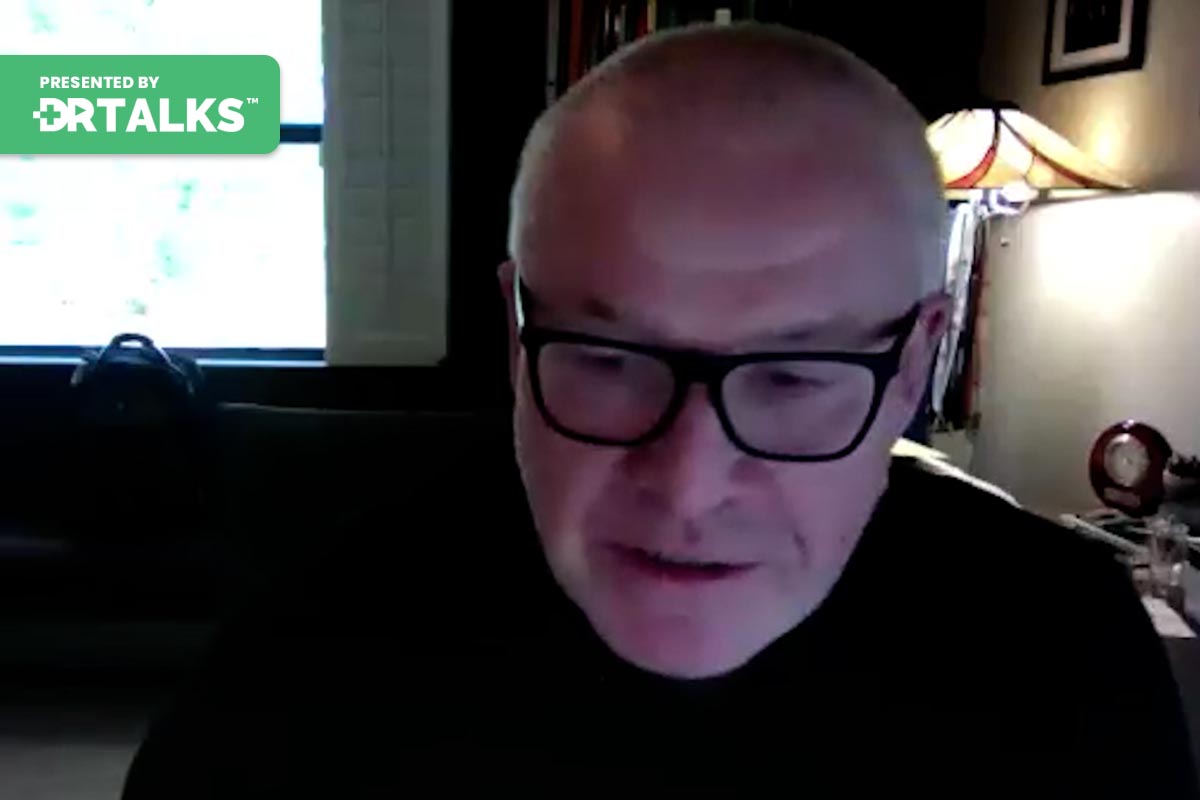


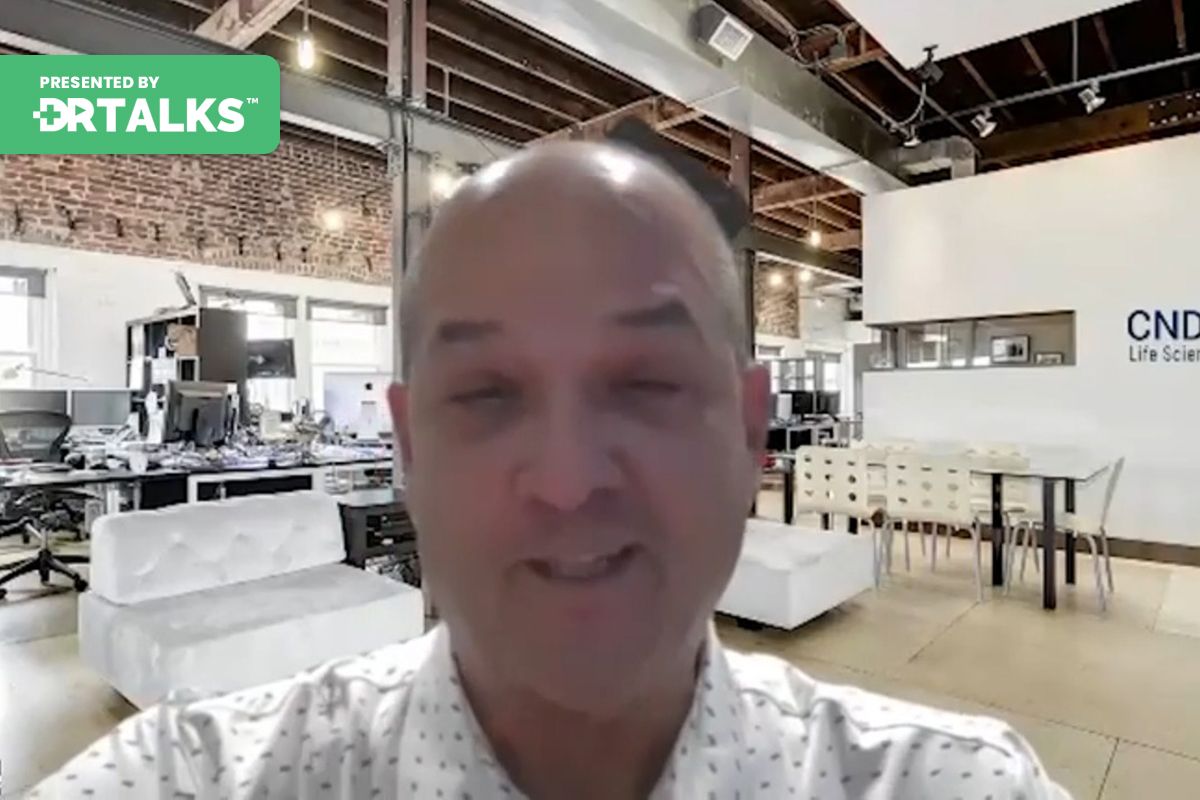
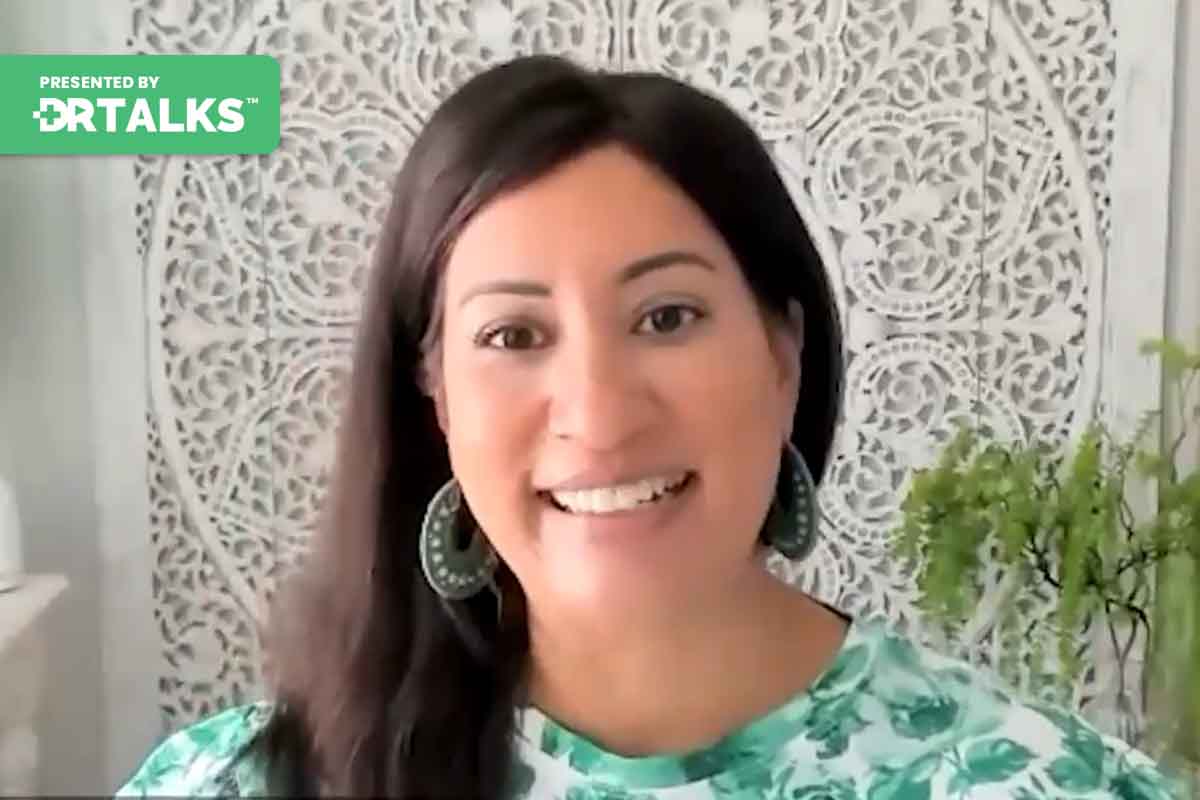
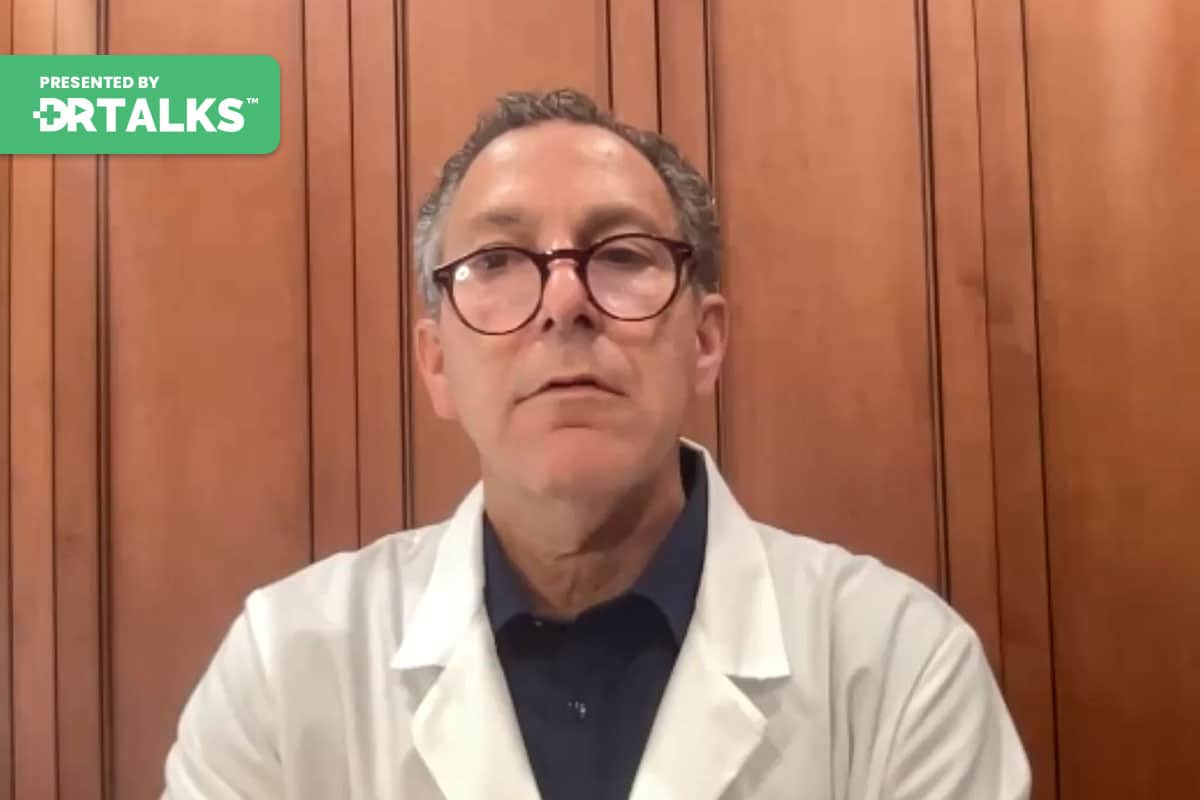
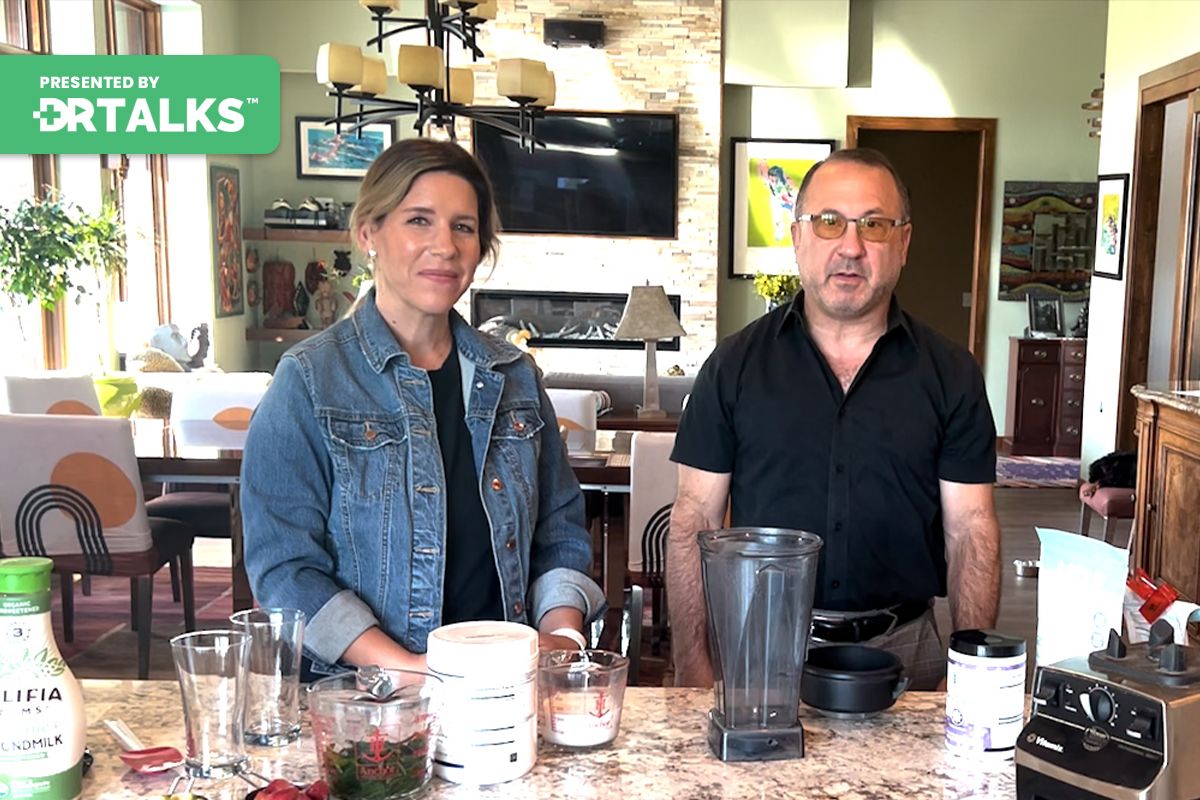
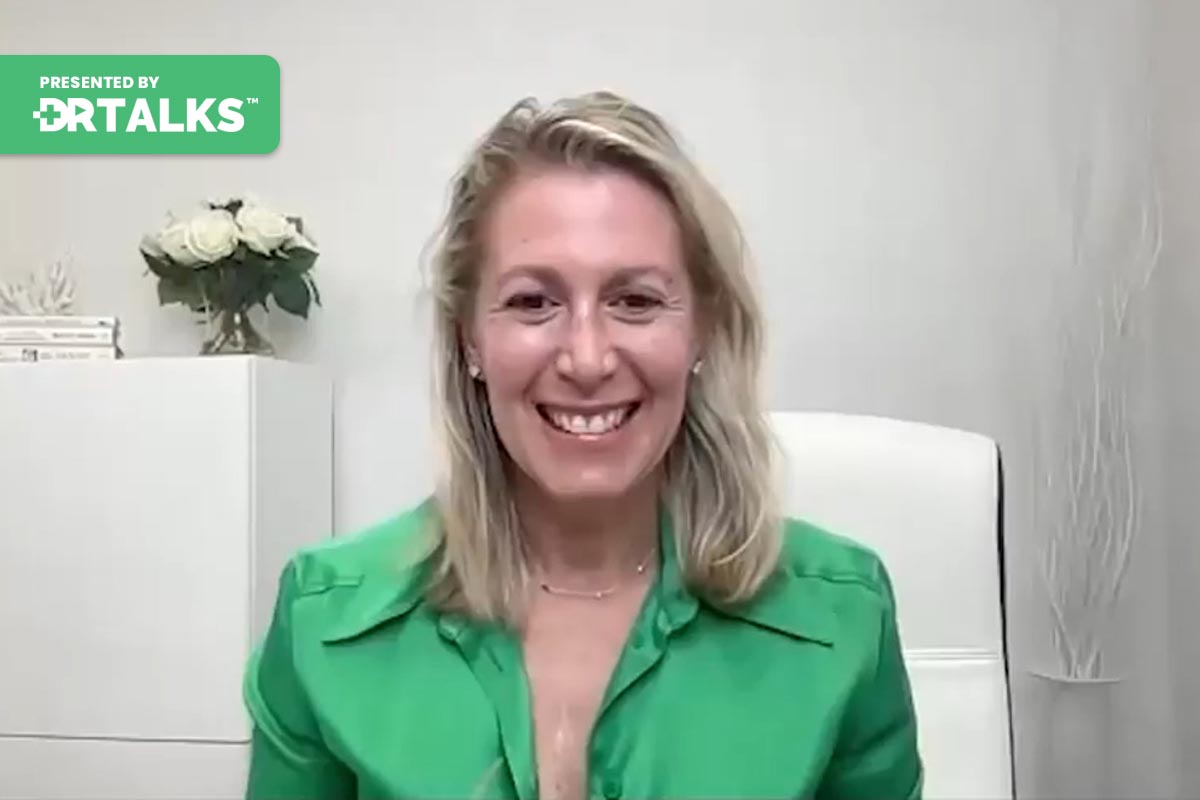


This transcript had more issues resulting from artificial translation. For ex, I had to watch the video to find out the exact location for extraction of these cells. Very interesting. Can hardly wait till FDA approves this.